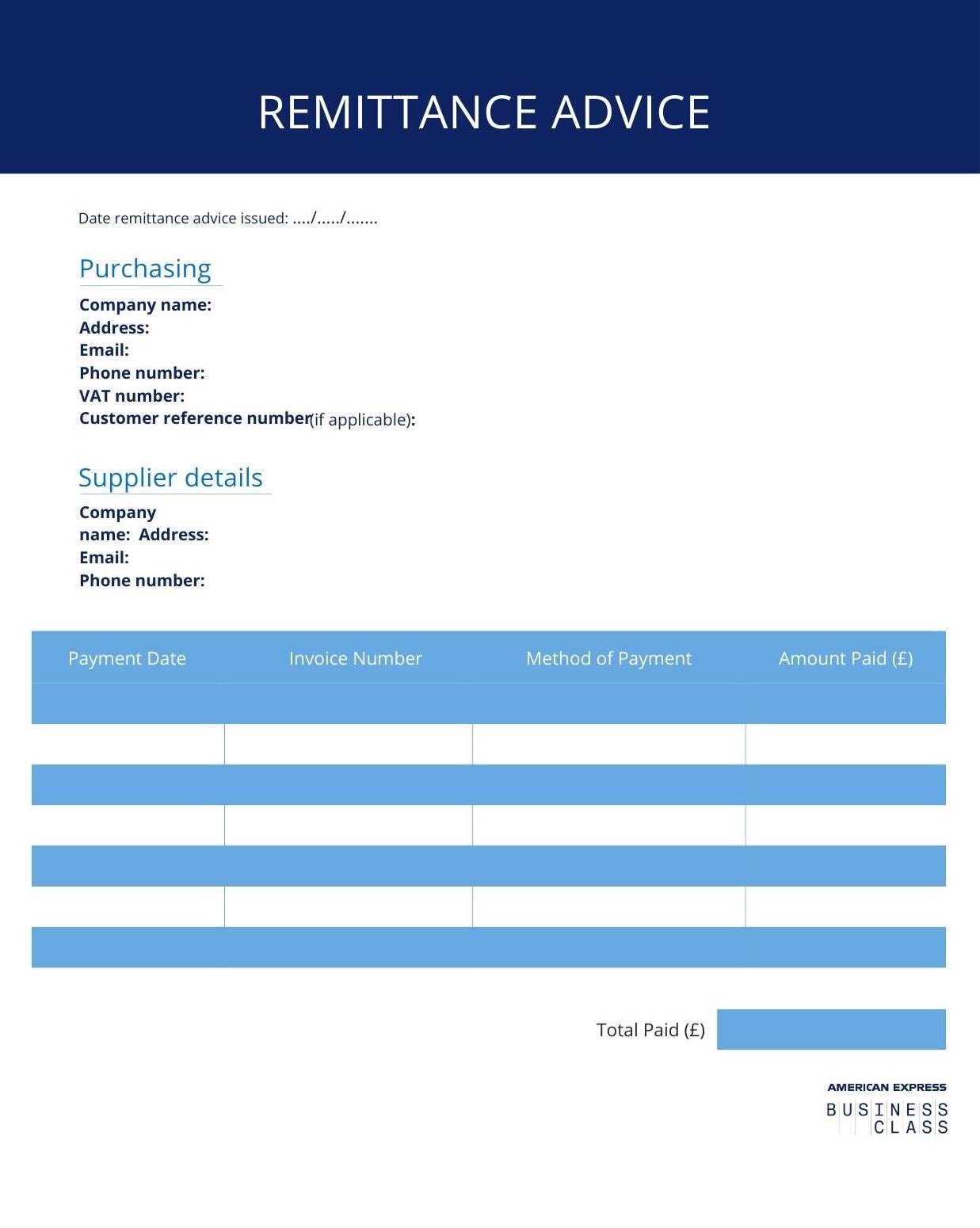Keeping track of payments can be challenging, especially when dealing with multiple suppliers and high volumes of orders. That's why many companies opt to issue remittance advice.
Typically sent from a company to a supplier, remittance advice serves as confirmation that a payment has been made. It’s a simple practice that supports accounting teams in more accurately matching payments made to customers. Here’s a closer look at the benefits of remittance advice and how to use it.
Summary
- What is remittance advice?
- Types of remittance advice
- Remittance advice template
- Why send remittance advice?
- How to send remittance advice
What is remittance advice?
Remittance advice is a document - sometimes called a remittance advice slip - sent from a buyer to a seller to inform them that their invoice has been paid. It contains additional details about the payment, such as how it was made, the date it was submitted and the invoice number, that enables the seller to quickly and easily match incoming payments to the correct customer invoice. In this way, remittance advice helps to streamline accounting processes.
Types of remittance advice
- Basic remittance advice - this is a simple document sent from a buyer - or customer - to the seller. It includes details such as the invoice number, payment amount and company address. See the template below.
- Removable invoice advice - this is an invoice sent by the seller to the buyer that includes a removable remittance slip for the customer to fill in and return.
- Scannable remittance advice - this is remittance advice that is scannable, which means a customer can print it off, fill in the details, then scan and send it back to the seller.
Remittance advice template
If you decide to share remittance advice with suppliers, there are several key details to include. Many of these you can find in the supplier invoice. Once you have these details, you can download and customise this template to start sending remittance advice slips to your suppliers.
 |
Below are some common fields you'll want to include when creating your remittance advice slip:
Your company details
This helps the supplier clearly identify who the payment is coming from. Include information such as your company name, address and VAT number.
Supplier details
Next, include supplier details including the name and address listed on the invoice they shared with you. You can also include their email address and phone number.
Method of payment
Include how the payment was made, for example bank transfer or American Express® Business Gold Card. This will help the supplier to know how their money will be coming to them.
Amount paid
Be sure to include the amount paid, along with any taxes or expenses.
Invoice number
You can find this in the supplier invoice. Including this number will make it much easier for the supplier to reference your payment.
Payment date
It can be useful to include the date you submitted the payment, as this helps a supplier to anticipate when the payment may be physically received.
When it comes to paying your suppliers, consider using the American Express® Business Gold Card which has payment terms of up to 54 days and no pre-set spending limits in the same way that credit cards do, which helps you manage your cash flow and optimise purchasing power¹. What's more, you'll gain 1 Membership Rewards® point for every £1 spent using your Card², which you can use to pay for purchases with hundreds of retailers and travel companies from Waitrose to British Airways, Eurostar and Harvey Nichols.
Why send remittance advice?
Go Swag is a Glasgow-based provider of branded gifts, including employee onboarding packs, client appreciation gifts, and event giveaways, supplying businesses including Amazon, Canon and Spotify.
The company sends remittance advice to its suppliers based all over the world and its Founder and CEO Conor McKenna says there are three key reasons why a business should send the document.
"Firstly, it confirms that a payment has been made, which helps to reconcile accounts and avoid discrepancies," says McKenna.
"Secondly, it allows for professional and efficient communication with suppliers, vendors and creditors, fostering relationships and trust. Thirdly, it provides a convenient way to keep track of payments made and received, aiding in accurate record-keeping."
Remittance advice is particularly useful when you have multiple transactions or purchase orders with the same supplier.
"It provides value in ensuring payments are not lost and that you and your supplier allocate payments to the same invoice," says Matthew Barton, Technical Manager for The Institute of Financial Accountants. This makes it easier to spot potential errors, such as omitted invoices and late payment charges, he adds. And if your supplier is expecting your payment, they may be quicker to alert to you to any potential mistakes, such as issuing payment to the wrong business or with the wrong reference.
Finally, there is also the added benefit of potentially receiving the goods you have purchased faster. Remittance advice tells suppliers that payment is on the way, enabling them to ship orders sooner than they might otherwise do if they were waiting until funds were in the bank.
Is remittance advice proof of payment?
There's a range of scenarios that could prevent a payment from landing in an account despite the fact it has been sent, such as non-automatic transactions or technical banking faults. For this reason, remittance advice does not serve as proof of payment, it only confirms that payment has been sent.
An auditor would not rely on remittance advice slips to verify a payment, they would only use bank statements as proof of what's been received.
How to send remittance advice
There are several ways to create and send remittance advice, depending on your preferences. Let’s look at the main methods of sending remittance advice:
Accounting software
Accounting platforms can automate the process of creating and sharing remittance advice. McKenna says that his software automatically creates and sends remittance advice via email once a payment has been made. Douglas, too, generates remittance advice using accounting software, that is then emailed out to suppliers.
For those without the automated option in their accounting platforms, email is usually the preferred option for sending over post, since it is quicker, easier and allows you to keep an electronic record of it being sent.
Post
Here, you can create a remittance advice note and send it to your supplier or vendor in the post. You can use a remittance advice template online to create your remittance advice note, then print it out and pop it in the post.
1. The maximum payment period on purchases is 54 calendar days and is obtained only if you spend on the first day of the new statement period and repay the balance in full on the due date. If you'd prefer a Card with no annual fee, rewards or other features, an alternative option is available – the Business Basic Card.
2. Membership Rewards points are earned on every full £1 spent and charged, per transaction. Terms and conditions apply.



